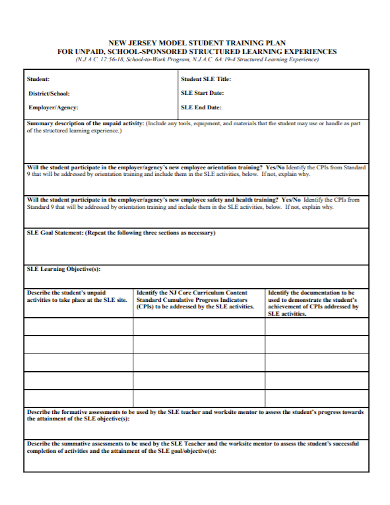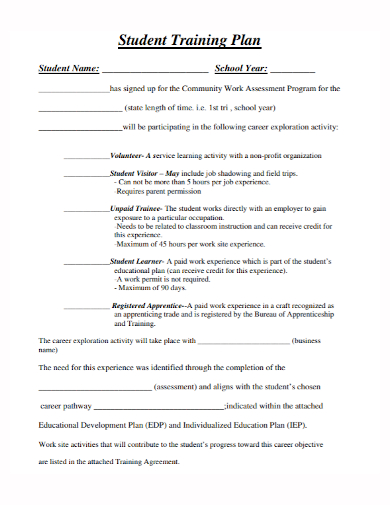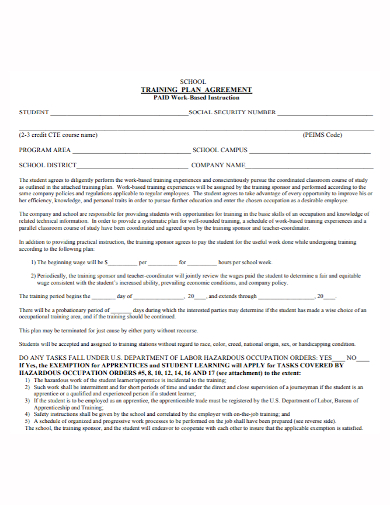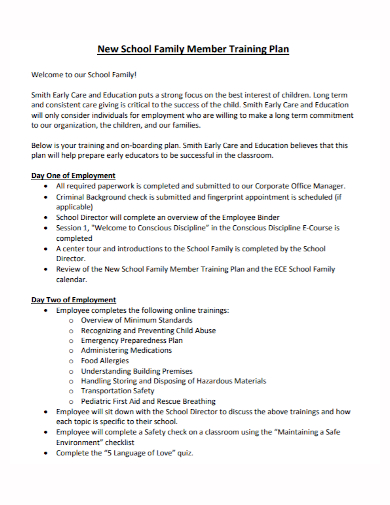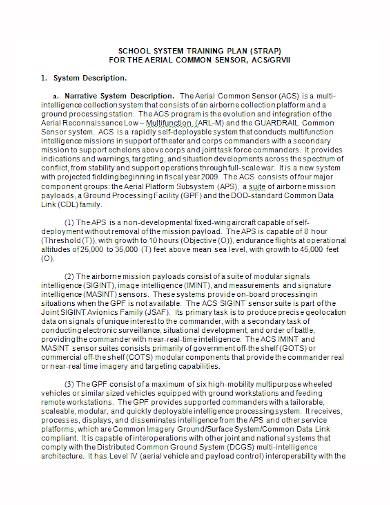Knowledge is power; it truly is, and no place is it more evident than in the field of education. No one is too old for anything, especially learning something new. Essential skills can be easily instilled into an individual if given proper training. Proper training can be achieved by means of a training plan.
Before enrolling in a training course, an objective is set. To learn a new skill, upgrade your knowledge in a specific field, and comply with requirements are just a few reasons people engage in a training course.
The goal of a training plan is to cater to the enrollees’ needs and help them achieve their goals in the most efficient way possible. Efficiency is not the only factor that must be met; the plan must also abide by a certified organization’s rules and standards.
10+ School Training Plan Samples
1. School Training Plan Template
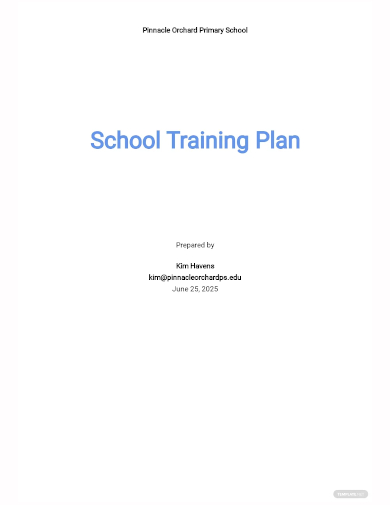
2. School Training Program Plan
3. School Student Training Plan
4. School Training Plan
5. School Technology Training Plan
6. School Individualized Student Training Plan
7. Sample School Training Plan
8. School Senior Education Training Plan
9. School Governance Training Plan
10. School Family Member Training Plan
11. School System Training Plan
Making Your Training Plan
Enough planning and careful, accurate preparations are needed to provide informative, well-organized courses. Putting attention to details shouldn’t be compromised for the success of the desired course. For most of the schools that offers programs, a maximum of 6 months are intended for the preparation and proposal of such courses that could benefit the welfare of the students and enrollees.
The question is, how will you make a training plan? These tips below will help you plan out the course. You just need to carefully read through the rest of the paragraphs in this article, then check the templates above that would suit the School or Training Plan that you’ll be formulating.
Identify Your Target Students Or Audiences
Each training or course is formulated for the purpose of encouraging active participation among students and achieve desired results. The audience should be categorized on a certain classifications like job description , educational attainment, experiences, what motivates them, and training their identified training needs. This student and target audience profiling will be beneficial for the trainer in establishing program goals and program objectives, lesson content, and presentation method that would be susceptible in addressing the needs of the enrollees.
Allocate the Budget
The training overall budget should cover honoraria and travel expenses for guest speakers (if any); reproduction of hand-outs and necessary materials that needs to be purchased; rental to the building or classroom used, purchase for other office needs, or for the development of the audio-visual support materials; and even allot budget for marketing and advertisement. This are the major expenses that the training course basically needs. But whatever needs or materials that the abovementioned didn’t include, you may still put it in the allocation of your budget requests.
Determining Objectives
The objectives, just like any other course must be clearly stated during the first few stages of the training. A great goal is considered non ambiguous, which means this should be specific and clear. All teachers, instructors, professors and trainers know this. Speakers (teachers) should remind themselves to use their words which may be communication of information, motivation, or skill building for their students. Taken from these goals, specific learning objectives that are aligned with the vision, mission and values of the institution will take place. Traditionally, these objectives will become the basis in making examinations and test questions. In most formal educational institutions, the practice would be that these objectives will be shared to the students in a form of syllabus or course pack, this would enable students to also keep in track with their own learning and assess whether they have aligned the objectives to what they are acquiring at the end of the semesters or training periods.
FAQs
How do you create a training plan?
Identify training needs. Review adult learning principles. Develop learning objectives for the individual and the business. Seek out or design appropriate training. Plan training. Implement training program with employees and sign off. Reviewing your training program.
What is a training plan outline?
The Training Plan outlines the objectives, needs, strategy, and curriculum to be addressed when training users on the new or enhanced information system. To develop a Training Plan, refer to the outline. Include the target audiences and topics on which training must be conducted on the list of training needs.
What does a good training plan look like?
A good training plan will indicate exactly how you will accomplish your goals. You should indicate how long training will last, how many sessions will occur, and what will happen during each session. Make sure that the steps align with your specific and broad objectives.
A school training plan is not easy to make, it’s a tedious, step by step process that needs a lot of considerations to look into. That is why making it from scratch will add up to the burden of making this. To gain every single inch of idea that you need to make your training plan successful, you are highly encouraged to make use in the customization of any of the templates presented above.
Related Posts
FREE 10+ School Discipline Plan Samples
FREE 10+ School Development Plan Samples
FREE 10+ Trainer Lesson Plan Samples
FREE 10+ Learning Strategic Plan Samples
FREE 10+ School Health and Safety Policy Samples
FREE 10+ Massage Therapy Business Plan Templates
FREE 7+ Lesson Plan Samples
FREE 12+ School Improvement Plan Samples
Sample Training Survey
FREE 10+ Personal Development Plan Templates
FREE 10+ Academic Action Plan Samples
FREE 10+ Diabetes Action Plan Samples
FREE 9+ Sample Daily Timetable
FREE 7+ Amazing Training Outline Templates
How to Develop an Effective Employee Training Program?


